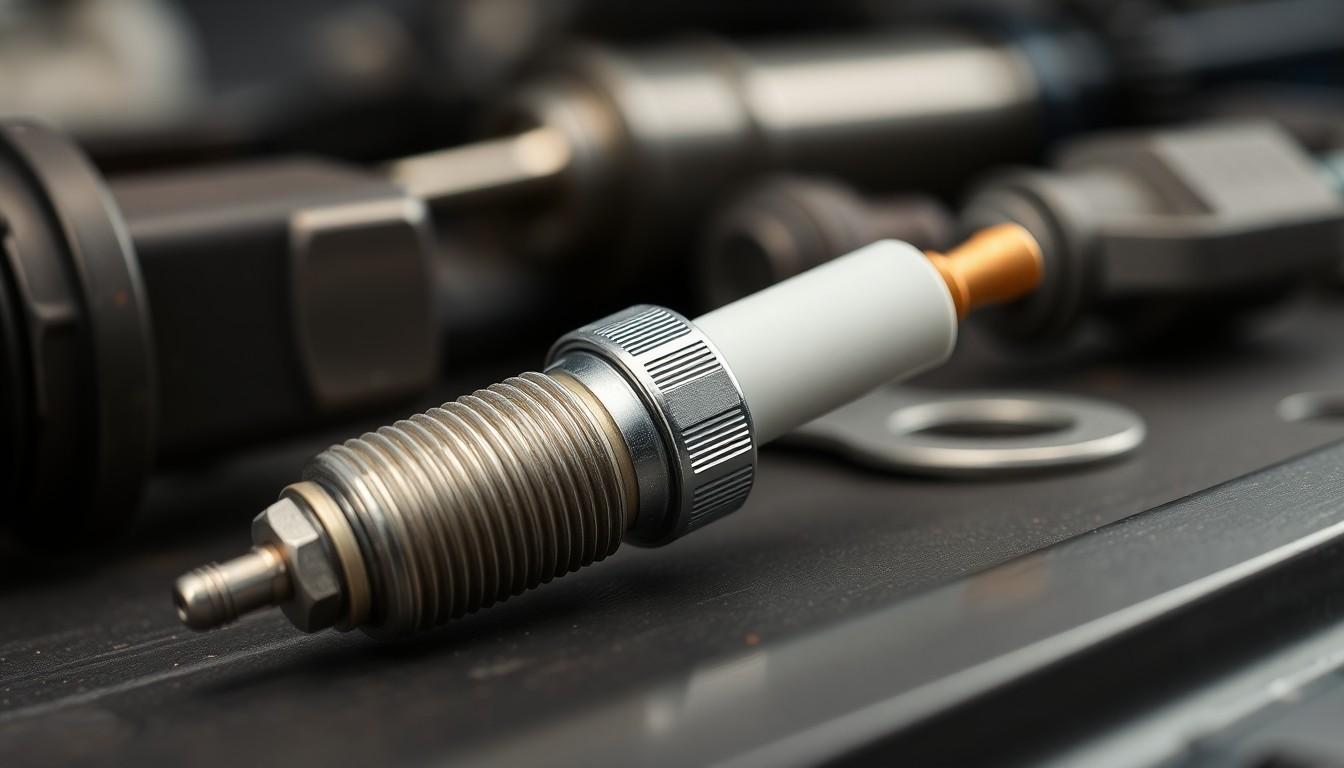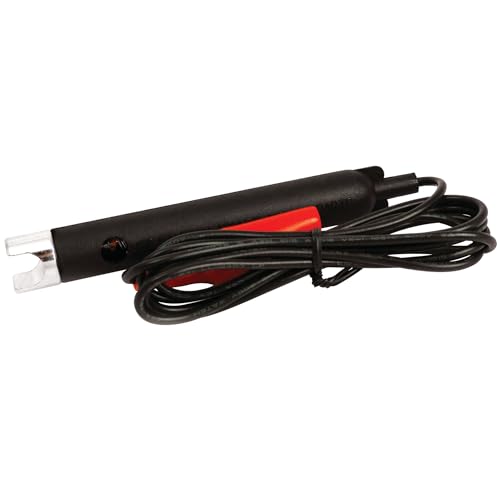Your vehicle’s spark plugs tell a story—one that can reveal crucial information about your engine’s health. By learning how to read these small but mighty components, we’ll help you decode potential issues before they become expensive repairs.
We know that examining spark plugs might seem intimidating at first, but it’s actually one of the most valuable diagnostic skills any vehicle owner can master. From identifying fuel mixture problems to detecting oil leaks, these little powerhouses provide a window into your engine’s performance. In this guide, we’ll walk you through the simple process of interpreting spark plug conditions and what they mean for your vehicle’s health.
What Are Spark Plugs and Why Read Them
Spark plugs are small but critical components in an internal combustion engine that create the electric spark needed to ignite the air-fuel mixture in the combustion chamber. These devices connect to the ignition system and transfer electrical energy into the combustion chamber, generating the spark that powers your vehicle.
Reading spark plugs provides valuable insights into your engine’s overall health and performance. The condition of a spark plug reflects what’s happening inside the combustion chamber, offering clues about fuel mixture, ignition timing, and potential mechanical issues. Mechanics often examine spark plugs during routine maintenance to diagnose problems before they cause major damage.
Each spark plug has several components including a center electrode, insulator, side electrode, and threaded shell. When examining spark plugs, you’re essentially looking at the deposits, wear patterns, and physical condition of these parts. Normal spark plugs typically show light tan or grayish deposits, indicating optimal engine operation.
Abnormal spark plug appearances signal exact engine problems:
- Black, sooty deposits indicate a rich fuel mixture
- White, blistered electrodes suggest the engine is running too hot
- Oil-fouled plugs point to potential valve seal or piston ring issues
- Melted electrodes often result from incorrect ignition timing
Learning to read these signs transforms ordinary maintenance into a diagnostic opportunity, helping you catch minor issues before they become expensive repairs. Regular spark plug inspection also helps optimize fuel efficiency and engine performance, making it a valuable skill for any vehicle owner.
Tools Needed to Check Spark Plugs

Examining spark plugs requires a few essential tools to safely remove, inspect, and reinstall them. A spark plug socket is the primary tool needed—this specialized deep socket is designed specifically to fit around spark plugs without damaging their ceramic insulators. Many mechanics pair this with a torque wrench to ensure proper tightening when reinstalling the plugs, preventing damage to the threads or insufficient seating.
For detailed inspection, a magnifying glass or dedicated spark plug reader proves invaluable. These tools allow you to closely examine the porcelain and electrode areas where subtle color changes indicate exact engine conditions. Some spark plug readers come equipped with built-in lights that illuminate the plug for better visibility of deposits and wear patterns.
Safety equipment shouldn’t be overlooked when working with engine components. Gloves protect your hands from hot surfaces and sharp edges, while safety goggles shield your eyes from debris that might fall during the removal process. These protective items are particularly important when checking plugs on engines that have recently been running.
Additional helpful tools include an extension bar for reaching deeply recessed plugs and a gap gauge to verify the electrode gap if you’ll be installing new plugs. Having compressed air or a small brush nearby helps clear away debris from plug wells before removal, preventing contaminants from entering the engine cylinders during the inspection process.
Normal Spark Plug Appearance – The Baseline

Understanding what a healthy spark plug looks like creates the foundation for effective diagnosis. Normal spark plugs typically display a light tan or gray color, indicating optimal operating temperature and good engine condition. This coloration serves as the baseline against which all other spark plug conditions should be compared.
Color and Condition
The ideal spark plug exhibits a light tan or grayish hue across its firing tip. This coloration demonstrates that the plug operates at the proper temperature range and suggests the engine maintains good overall health. Variations from this standard color often point to exact engine issues that require attention.
Electrode and Ground Strap
A properly functioning spark plug shows uniform color change on both the electrode and ground strap. The gray or tannish area should appear close to where the electrode connects with the main body of the spark plug. This positioning indicates correct ignition timing and efficient combustion within the engine cylinder.
Porcelain Insulator
The white porcelain insulator on a normal spark plug remains relatively clean and free of heavy deposits. No oil residue or excessive carbon buildup should be visible on this section. Clean porcelain confirms the absence of oil leaks or carbon accumulation problems that might compromise engine performance.
Burn Line
The burn line, where color changes occur on the ground strap or electrode, provides valuable insight into timing and fuel mixture. On a healthy spark plug, this line sits close to the junction between the electrode and the main body. Proper positioning of the burn line confirms that combustion happens at the right moment in the engine cycle.
Absence of Deposits
Healthy spark plugs lack excessive carbon, oil, or fuel residue on the firing tip. The absence of these deposits indicates efficient fuel combustion and proper engine operation. When examining your spark plugs, minimal buildup suggests your engine runs cleanly without producing excessive waste products.
Reading Spark Plug Color Patterns

The color patterns on spark plugs reveal crucial information about your engine’s health and performance. Interpreting these colors correctly helps diagnose potential issues before they become serious problems.
Brown or Tan Deposits – Normal Operation
Light tan or grayish-tan coloration on spark plugs indicates optimal temperature operation and good engine condition. Dark coffee brown deposits also signal ideal engine performance with the correct fuel-to-air mixture. These colors represent the benchmark of a healthy combustion process, showing that your engine is functioning efficiently without any fuel mixture imbalances.
Black Sooty Deposits – Rich Fuel Mixture
Spark plugs with black or glossy black appearances point to a rich fuel mixture in the combustion chamber. This condition occurs when there’s too much fuel compared to air, resulting in decreased engine performance and incomplete combustion. Engines running rich can experience reduced fuel economy, sluggish acceleration, and potentially shortened engine lifespan due to carbon buildup on critical components.
White or Gray Deposits – Lean Fuel Mixture
Grayish-white or very light tan coloration on the spark plug head indicates a lean fuel mixture with excessive air and insufficient fuel. This condition often leads to cylinder head overheating and can cause important engine damage if left uncorrected. Lean major conditions appear as greyish-white coloration with minimal carbon buildup, causing rapid overheating. Lean minor conditions show as very light tan colors with some carbon deposits, still elevating cylinder temperatures and reducing engine longevity.
Oil-Fouled Spark Plugs – Internal Engine Issues
Oil-fouled spark plugs typically appear wet or have an oily coating, signaling internal engine problems. These issues commonly stem from worn piston rings, deteriorated cylinder walls, or failing valve stem seals that allow engine oil to leak into the combustion chamber. The ground strap color also provides insights into ignition timing—gold or light gray suggests insufficient timing, while a blue line just below the ground strap’s bend indicates optimal timing. Advanced ignition timing causes the blue line to disappear and may display rainbow colors or melting, warning of potential detonation and engine damage.
Identifying Spark Plug Damage

Examining spark plugs reveals critical information about your engine’s health and performance. Damage to spark plugs manifests in various ways, each indicating exact issues that require attention.
Electrode Gap Issues
Electrode gaps provide valuable diagnostic information about your engine’s condition. Worn or eroded electrodes typically indicate excessive wear from high mileage or improper ignition timing. Carbon or oil deposits collecting on the electrodes suggest ongoing issues with rich fuel mixtures, oil leakage into the combustion chamber, or incomplete combustion. Regular inspection of electrode gaps helps identify these problems before they cause important engine damage or performance issues.
Heat Range Problems
Heat range problems appear through distinctive color patterns on spark plugs. Overheating manifests as white or light gray coloration on the spark plug, often indicating the plug has a heat range that’s too hot for your exact engine. Underheating shows up as dark brown or black coloration, suggesting the plug may be too cool for optimal performance. Selecting the correct heat range for your engine prevents these issues and ensures proper spark plug function under various driving conditions.
Physical Damage Signs
Physical damage to spark plugs takes several forms that signal serious engine concerns. Cracked or broken porcelain insulators result from extreme overheating or physical impact during installation. Bent or melted electrodes point to improper installation techniques, severe overheating conditions, or underlying mechanical issues within the engine. Welded or fused electrodes typically occur from extreme heat conditions that cause the metal components to melt together. Oil or fuel soaking visible on the spark plug surface indicates leaks within the engine or combustion problems that need immediate attention. Examining these physical damage signs during routine maintenance can prevent catastrophic engine failure and expensive repairs.
How Often to Check Your Spark Plugs

Spark plug inspection frequency varies depending on your vehicle’s specifications, driving habits, and overall engine health. Most manufacturers recommend checking spark plugs every 30,000 to 100,000 miles as part of regular maintenance. Modern vehicles often feature long-life spark plugs that can last up to 100,000 miles before replacement becomes necessary.
Routine Maintenance
Regular spark plug inspections help maintain optimal engine performance and prevent unexpected issues. The inspection interval largely depends on your exact vehicle model and the type of spark plugs installed. Many newer vehicles equipped with iridium or platinum spark plugs require less frequent checks than those with standard copper plugs. Consulting your owner’s manual provides the most accurate maintenance schedule customized to your vehicle.
Performance Issues
Engine performance problems often signal the need for immediate spark plug inspection. Signs that warrant checking your spark plugs include rough idling, difficulty starting the engine, decreased fuel efficiency, and engine misfires. Poor acceleration or a noticeable drop in power output also indicates potential spark plug issues. Addressing these symptoms promptly through spark plug inspection can prevent more extensive engine damage and costly repairs.
Post-Tuning Checks
Examining spark plugs after engine modifications or tuning proves essential for optimizing performance. Following any adjustments to fuel mixture or ignition timing, inspect your spark plugs to verify the changes produced the desired effect. After performing a wide-open throttle (WOT) pull, immediately shutting down the engine allows you to observe the spark plug condition under high-load circumstances. This technique helps identify if your timing and fuel mixture settings are optimal for performance driving conditions.
Fixing Issues Identified by Spark Plug Reading

Rich Fuel Mixture
A rich fuel mixture leaves dark brown or black deposits on your spark plugs, indicating excessive fuel in the combustion chamber. Adjusting the fuel mixture to be leaner resolves this issue effectively. You’ll need to modify the carburetor jets or recalibrate the fuel injection system settings for optimal performance. These adjustments help restore proper combustion and improve both engine efficiency and power output.
Lean Fuel Mixture
White or light gray coloration on spark plugs signals a lean fuel mixture that can cause engine overheating and potential damage. Enriching the fuel mixture counters this condition by increasing the fuel-to-air ratio. This correction typically involves adjusting the fuel flow or modifying the air-fuel ratio settings in your engine management system. Addressing a lean condition promptly prevents cylinder damage and preserves engine longevity.
Ignition Timing Issues
The burn line position on spark plugs reveals crucial information about your ignition timing. When the burn line appears too far from the electrode, your timing is retarded, requiring advancement for optimal performance. Conversely, a burn line positioned too close to the threads indicates overly advanced timing, necessitating adjustment in the opposite direction. Proper timing ensures complete fuel combustion and maximizes engine efficiency.
Oil Consumption
Oil presence on spark plugs often points to internal engine wear affecting critical components. Worn piston rings, deteriorated valve stem seals, or damaged cylinder walls allow oil to enter the combustion chamber. These issues require replacement or repair of the affected components to restore proper engine function. Regular monitoring of oil-fouled plugs helps track the progression of internal engine wear.
Overheating
Spark plugs displaying a white or light gray color indicate potential engine overheating issues that demand immediate attention. Check for cooling system malfunctions, including thermostat failures, radiator blockages, or water pump problems. Incorrect ignition timing or lean fuel mixtures can also cause overheating conditions. Resolving these underlying problems by repairing the cooling system, adjusting ignition timing, or enriching the fuel mixture prevents serious engine damage and extends component life.
Conclusion
Reading spark plugs is more than just a maintenance task – it’s a window into your engine’s health. We’ve shown how these small components can reveal critical information about fuel mixtures ignition timing and potential mechanical problems.
By regularly checking your spark plugs and understanding what their appearance tells you you’ll catch minor issues before they become major repairs. This simple diagnostic skill can save you thousands in repair costs while extending your engine’s life.
Remember that different symptoms require different answers. Whether it’s adjusting fuel mixtures correcting timing issues or addressing internal engine wear your spark plugs will guide you toward the right fix.
Make spark plug inspection part of your regular maintenance routine and you’ll enjoy better performance improved fuel efficiency and fewer unexpected breakdowns.
Frequently Asked Questions
What do normal spark plugs look like?
Normal spark plugs typically have light tan or grayish deposits on the electrode and insulator. This coloration indicates that your engine is running efficiently with proper fuel mixture and ignition timing. The electrodes should show minimal wear, and the gap between them should be consistent with manufacturer specifications. This healthy appearance suggests optimal combustion and engine performance.
How often should I check my spark plugs?
Most manufacturers recommend checking spark plugs every 30,000 to 100,000 miles, depending on your vehicle specifications and the type of spark plugs installed. Modern vehicles with iridium or platinum spark plugs typically have longer service intervals. However, if you notice performance issues like rough idling, difficulty starting, or decreased fuel efficiency, inspect your spark plugs regardless of mileage.
What does a black, sooty spark plug indicate?
Black, sooty deposits on a spark plug indicate a rich fuel mixture, meaning there’s too much fuel compared to air in the combustion chamber. This can be caused by a clogged air filter, faulty oxygen sensor, or problems with the fuel injection system. Rich running conditions lead to decreased fuel economy, sluggish performance, and potentially fouled plugs that need replacement.
What tools do I need to check spark plugs?
To properly check spark plugs, you’ll need a spark plug socket (typically 5/8″ or 13/16″), a ratchet, a torque wrench for proper reinstallation, a feeler gauge to check electrode gaps, and a clean cloth for wiping plugs. Optional but helpful tools include a magnifying glass for detailed inspection and anti-seize compound for reinstallation. Always work with a cool engine and wear safety gloves.
What do white deposits on spark plugs mean?
White or grayish-white deposits on spark plugs indicate a lean fuel mixture, where there’s too much air compared to fuel. This condition causes higher combustion temperatures and can lead to engine overheating, detonation, and possible engine damage. Common causes include vacuum leaks, clogged fuel injectors, or fuel delivery problems. This issue requires immediate attention to prevent serious engine damage.
Can spark plugs reveal oil leak problems?
Yes, spark plugs can definitely reveal oil leak problems. If you see wet, black, oily deposits on the spark plug, it indicates oil is entering the combustion chamber. This typically suggests worn valve guides, valve seals, or piston rings. Oil-fouled plugs will misfire and cause poor performance. These symptoms indicate serious internal engine wear that requires professional attention.
How do I know if my spark plugs need replacement?
Spark plugs need replacement if you observe excessive electrode wear (rounded or eroded electrodes), large gaps between electrodes, cracked insulators, or heavy deposits that don’t clean off. Performance symptoms include rough idling, difficulty starting, decreased fuel economy, or engine misfires. Most modern spark plugs last 60,000-100,000 miles, but always follow your vehicle manufacturer’s recommended replacement intervals.
What do spark plugs tell me about ignition timing?
Spark plugs provide valuable insights about ignition timing through the burn line position on the insulator and ground strap coloration. If timing is correct, you’ll see even wear and light tan coloration. Advanced timing shows as white deposits at the electrode tip, while retarded timing appears as sooty deposits toward the shell. Proper ignition timing is crucial for optimal engine performance and fuel efficiency.
Can checking spark plugs prevent major engine repairs?
Absolutely. Regular spark plug inspection can identify issues like improper fuel mixtures, oil consumption, overheating, and ignition problems before they cause serious damage. By catching these problems early, you can address minor issues before they escalate into costly repairs. Think of spark plug inspection as an early warning system for your engine’s health.
How do spark plugs affect fuel efficiency?
Spark plugs directly impact fuel efficiency by influencing combustion quality. Worn or fouled plugs create weak sparks that result in incomplete combustion, wasting fuel and reducing power. Properly functioning spark plugs ensure optimal ignition of the air-fuel mixture, maximizing energy extraction from fuel. Simply replacing worn spark plugs can improve fuel economy by 5-10% and restore lost engine performance.











